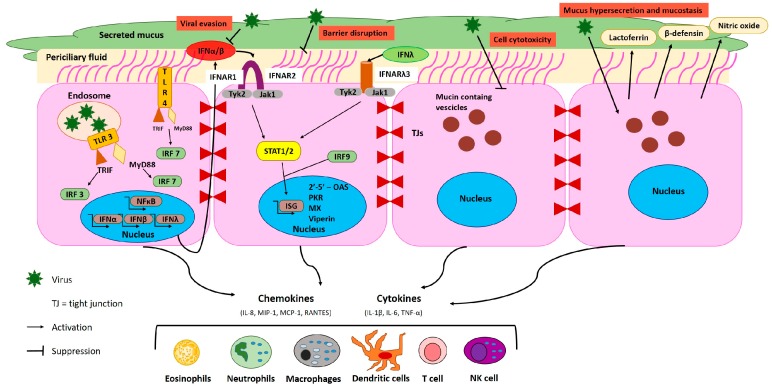Figure 1.
Direct and indirect effects of viral infections of the airway epithelium. Upon entrance into the cell, viruses are recognized by the Toll-like receptor (TLR) on either cell membrane or in endosomes. TLRs activate interferon regulatory factors (IRFs) leading to IFN-α and IFN-β release via the Toll/IL-1 receptor domain-containing adaptor (TRIF). TLR3 stimulates IRF-7 and NF-κB via MyD88 activation, leading to the release of proinflammatory cytokines and the production of IFN-α, -β, and -λ, respectively. Secretion of proinflammatory cytokines and chemokines activate the immune system, through recruitment of eosinophils, neutrophils, macrophages, dendritic cells, T cells, and NK cells. Most respiratory viruses have developed strategies to escape antiviral defense, mainly by interfering with the IFN system or by affecting the epithelium barrier, with the consequence of a loss of integrity and protection. Furthermore, respiratory viruses can perturb (skewed or exaggerated) inflammatory responses and production of soluble mediators.

